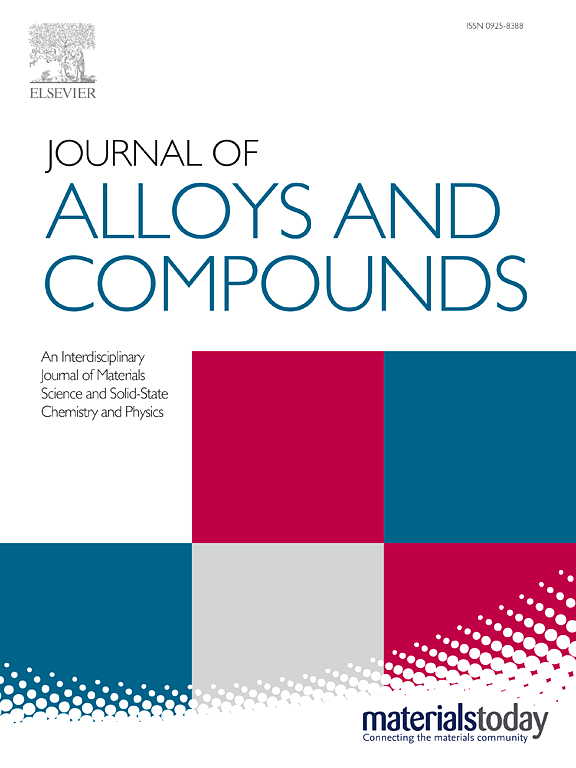The microstructure and anisotropy of compressive behavior in NiTiCu alloy fabricated by laser powder bed fusion processing
IF 5.8
2区 材料科学
Q2 CHEMISTRY, PHYSICAL
引用次数: 0
Abstract
The microstructure and anisotropy of compressive behavior in Ni49.6Ti49.4 Cu1 alloy prepared by fusing NiTi, pure Ti, and pure Cu powders using laser powder bed fusion (LPBF) were investigated. Three distinct microstructure features were identified, namely, weakly textured columnar austenitic grains containing martensite, a gradient microstructure varying from the equiaxed grains containing martensite in the center to columnar austenitic grains at the edge of the build, and strongly textured columnar austenitic grains under different LPBF parameters. The equiaxed grains in the center of the sample built at the highest power of 400 W were primarily caused by a large thermal activation upon multiple thermal cycles during LPBF. The anisotropy in the recoverable strain is primarily caused by preferred grain orientation, while the distribution of martensite in the loading direction also contributes to the anisotropy for a gradient microstructure, especially at low strain level. The critical stress for martensite formation (σc) and recovery strain due to shape-memory effect (SME) exhibited no anisotropy after cyclic compression and heating in boiling water, and were primarily affected by the martensitic transformation temperatures.激光粉末床熔合制备NiTiCu合金的显微组织和压缩行为的各向异性
研究了激光粉末床熔合制备Ni49.6Ti49.4 Cu1合金的显微组织和压缩性能的各向异性。发现了3种不同的微观组织特征,即弱织构的含马氏体柱状奥氏体晶粒,从中心含马氏体的等轴晶到边缘的柱状奥氏体晶粒的梯度组织,以及不同LPBF参数下强织构的柱状奥氏体晶粒。在最高功率400w下形成的样品中心等轴晶粒主要是由于LPBF过程中多次热循环产生的大量热激活所致。可恢复应变的各向异性主要由晶粒择优取向引起,而马氏体在加载方向上的分布也对梯度组织的各向异性起作用,特别是在低应变水平下。在沸水中循环压缩和加热后,马氏体形成的临界应力(σc)和形状记忆效应恢复应变(SME)不表现出各向异性,主要受马氏体转变温度的影响。
本文章由计算机程序翻译,如有差异,请以英文原文为准。
求助全文
约1分钟内获得全文
求助全文
来源期刊

Journal of Alloys and Compounds
工程技术-材料科学:综合
CiteScore
11.10
自引率
14.50%
发文量
5146
审稿时长
67 days
期刊介绍:
The Journal of Alloys and Compounds is intended to serve as an international medium for the publication of work on solid materials comprising compounds as well as alloys. Its great strength lies in the diversity of discipline which it encompasses, drawing together results from materials science, solid-state chemistry and physics.
 求助内容:
求助内容: 应助结果提醒方式:
应助结果提醒方式:


